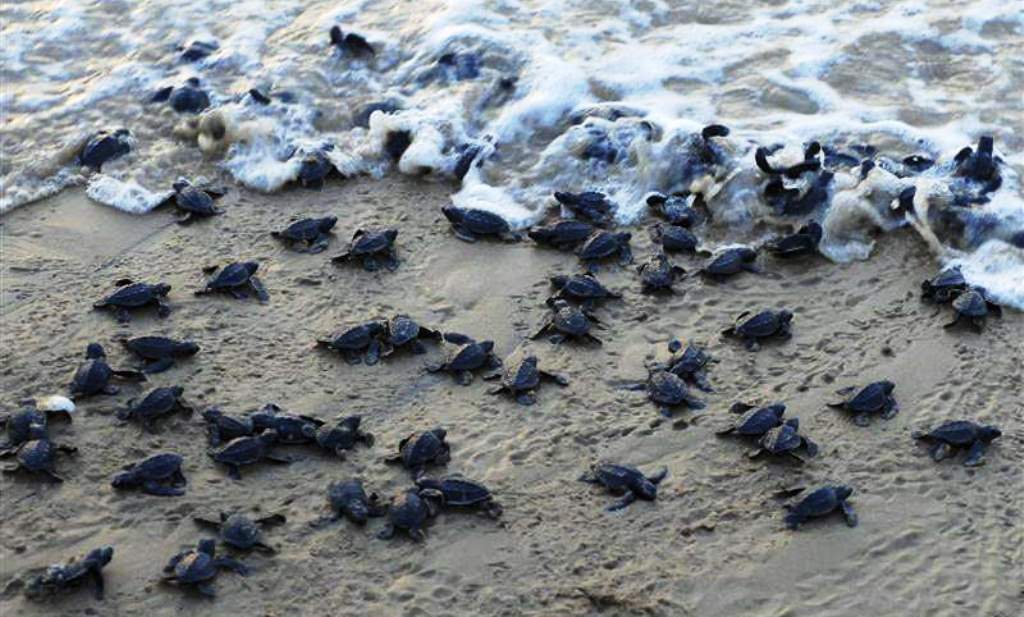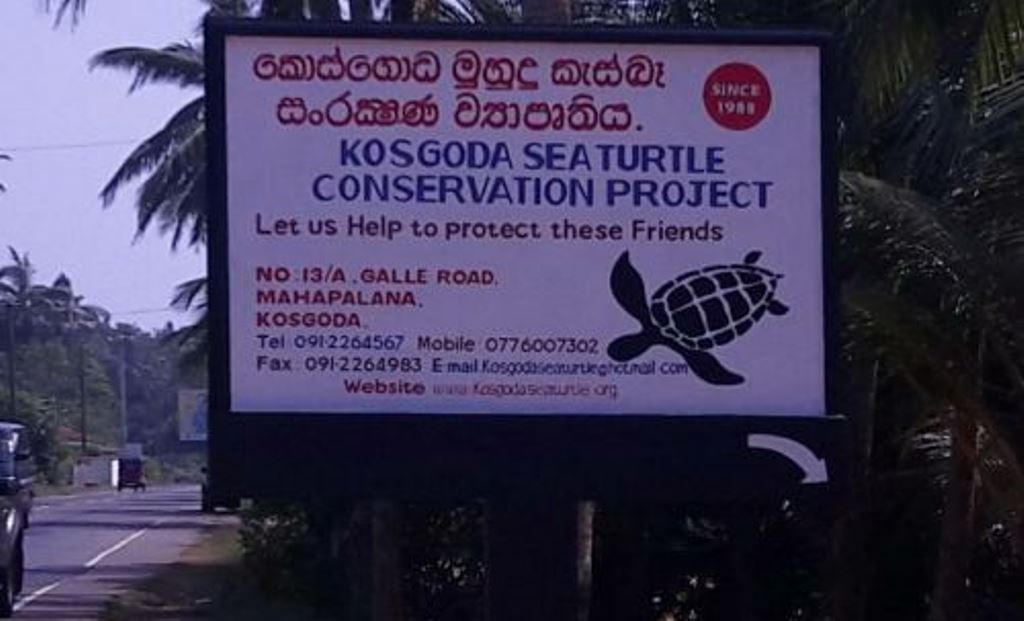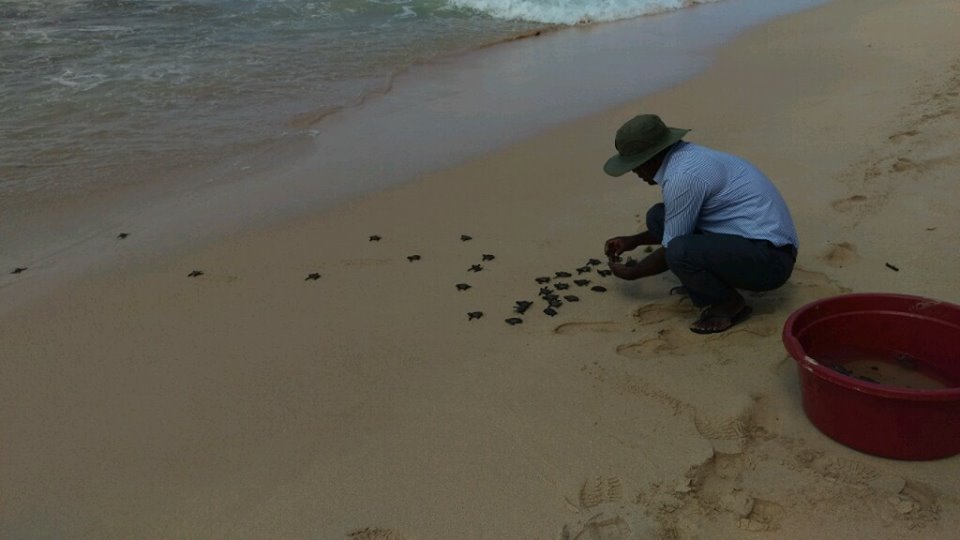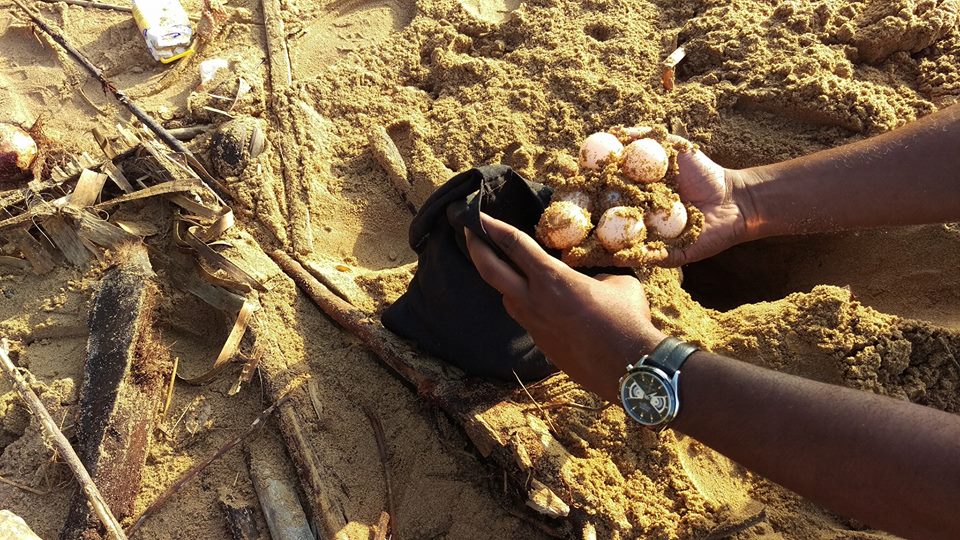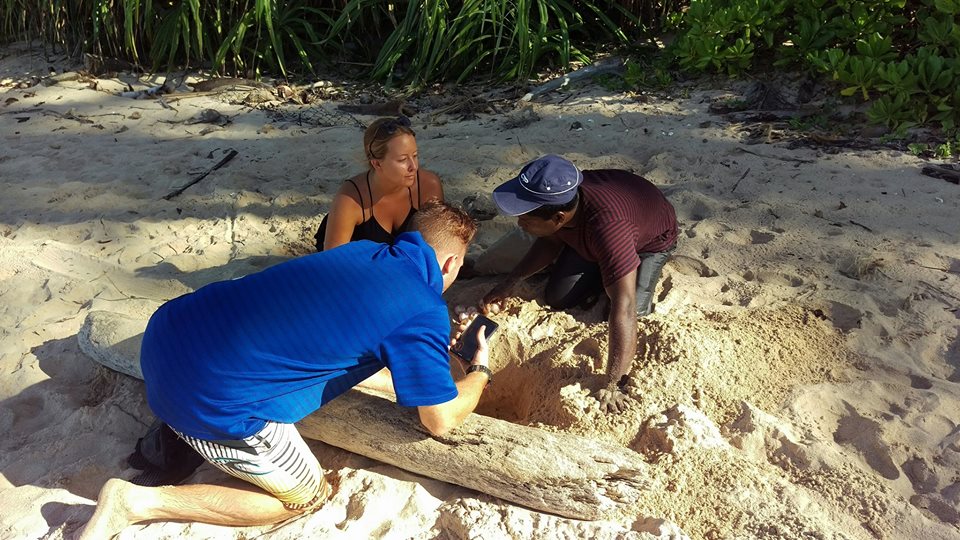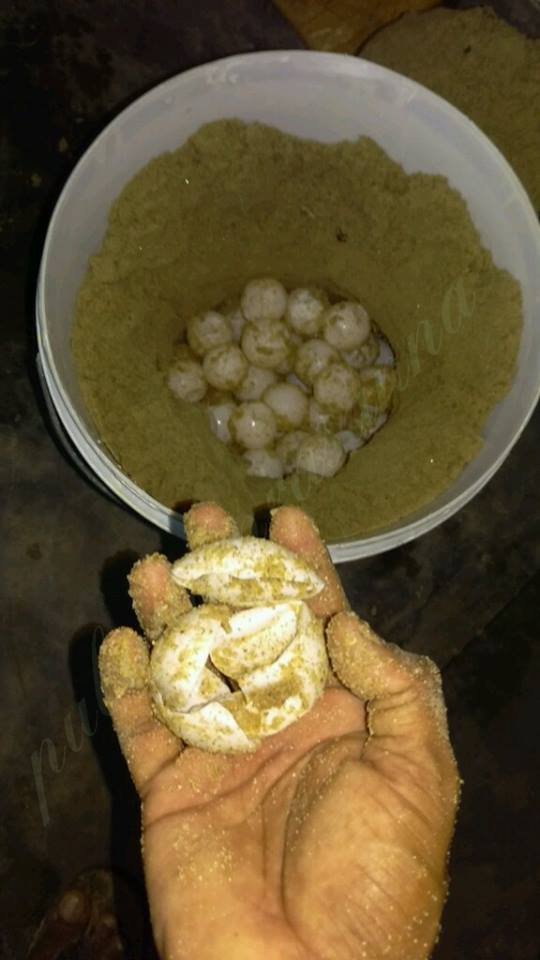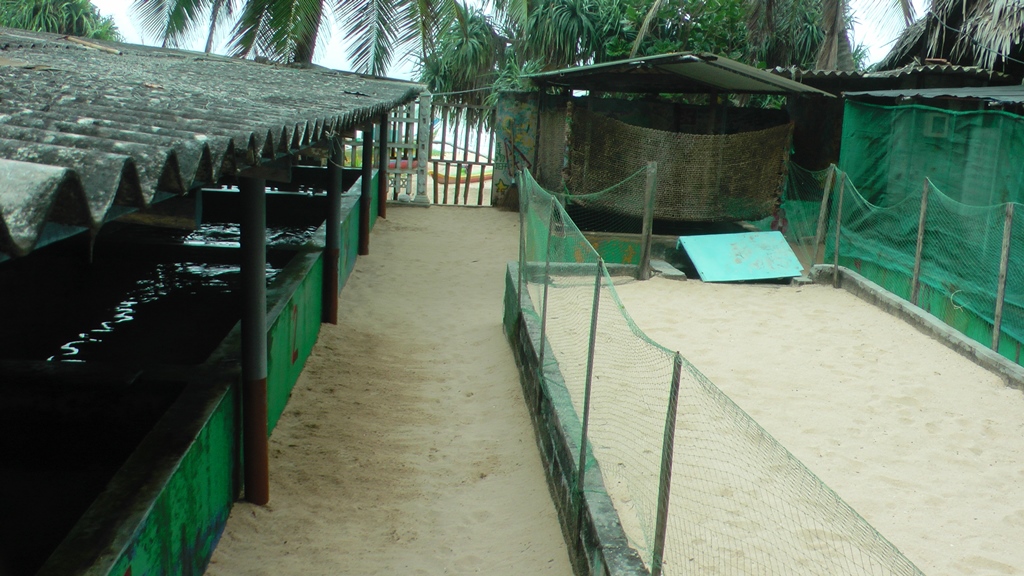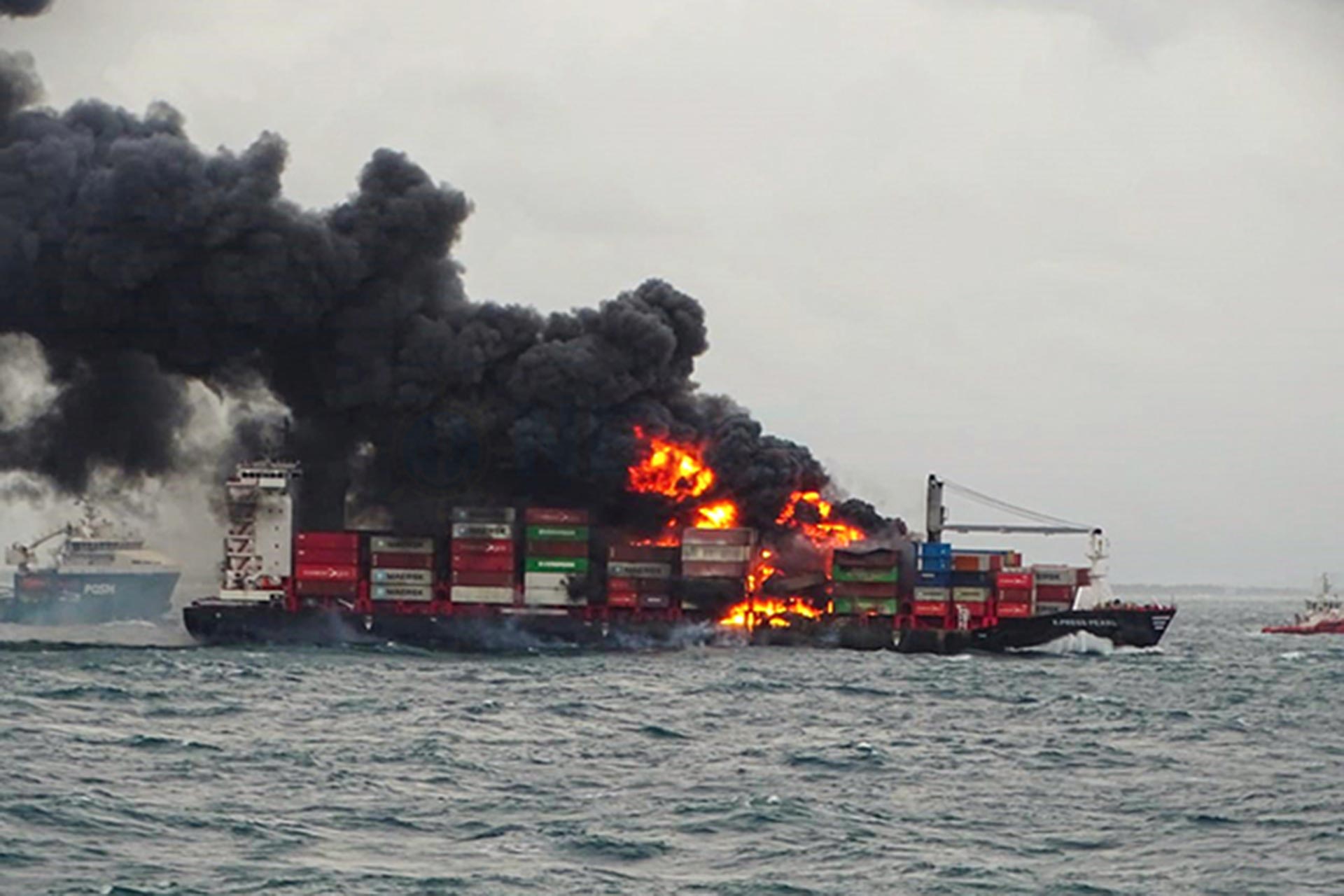Information received from the Department of Wildlife Conservation according to the Information Act revealed that half of the Turtle Conservation Centres around several places of the country including the Southern are maintained of illegal base. According to the information neither of these are permitted by the Department of Wildlife Conservation, except for the suggested conservation one located in Hikkaduwa.
These illegal Turtle Conservation Centres are reported to be earning a lot of money retrieved from foreigners and local tourists on a daily basis, without paying taxes, ticketing 50-100 Rupees for locals and over 1000 from foreigners, and even 1500/- per every releasement of a baby Turtle at a maximum of 5.
According to Red Data statistics, Turtles are known to be an endangered species, and reports say that their decimation is getting increased with manmade activities. Reportedly 5 of the 7 species of Oceanic Turtles acquire the Sri Lankan coasts for their breeding grounds. These species are Olive Ridley Turtle, Loggerhead Turtle, Green Turtle, Hawksbill Turtle and Leatherback Turtle.

These illegal Conservation units are being maintained around frequent hotspots of the Turtles i.e. Mirissa, Weligama, Habaraduwa, Hambantota, Angoda, Rekawa and Boondala. The Information Act revealed that the trafficking takes on around 15 centres around the area, titled ‘Turtle Conservation’, while programmes in conserving these endangered species are also being carried out and the Department follows a silent policy towards these illegalities.
What is this Turtle Conservation?
A Turtle conservation is carried out typically when these species are endangered by the hand of men and natural predators in breeding grounds, that their eggs are taken into conservation units for breeding, for the later purpose of exposing into the oceans. Thus taking care of weakened ones is also part of the process.
Nevertheless, these illegal centres maintain highly non-biological systems in maintaining the species, and thus reports say that their eggs even are being sold for prices varied from 50 to 100 Rupees.
The Damage upon the Population
The sex of a Turtle, in fertilization divided into 1:1 ratio, is determined by the heat consumed by the eggs during hatching, for that thermal species like Turtles ought to be taken into biological measures in artificial conservation. However, as consequence to following rather unscientific measures on populating the breeds, these illegal sites are responsible in breeding nearly 97% of the babies to be male, obstructing the natural reproduction, causing extinction. Adding worst to the tragedy, many Turtle eggs meet with fungal infections for following unscientific measures, accounting to increasing the death rate of baby Turtles as well.
The Damage upon the Population
The sex of a Turtle, in fertilization divided into 1:1 ratio, is determined by the heat consumed by the eggs during hatching, for that thermal species like Turtles ought to be taken into biological measures in artificial conservation. However, as consequence to following rather unscientific measures on populating the breeds, these illegal sites are responsible in breeding nearly 97% of the babies to be male, obstructing the natural reproduction, causing extinction. Adding worst to the tragedy, many Turtle eggs meet with fungal infections for following unscientific measures, accounting to increasing the death rate of baby Turtles as well.

Juvenile Frenzy’, known to be the Natural Selection mechanism of the Turtles, predicts the survival of the fittest among the population. Attorney Environmentalist Jagath Gunawardena says, that typically consumes 48 hours, the infants are being selected during the process to understand the eco-location of the earth, for travelling in the ocean and for migration, for the rest of their lives.
However, these illegal conservation units hold responsibility in preventing these babies from experiencing that vital element of life, and having them artificially controlled, these babies would lack the capacity to access vital nutritious components that can only be consumed by the egg itself. It directly affects the continuity of these species, that it even causes babies to be fighting against each other for survival killing themselves, and living in a confined concrete tank, it declines the capacity to later survive in the oceans.
More, these babies are being maintained without considering the biodiversity amongst the species, putting them altogether. Weakening the population, exposing them into the open sea once been grown is useless, for they would be easily caught by the natural predators, according to Mr. Gunawardena. This is because the officials in these illegal centres act for the sole purpose of earning money out of the industry, and not conserving the Turtle life at all. It is a sin to waste a valuable sea life as such, which can live up to 300 years without being deformed.
It is clear that such trafficking are being carried out under noses of the Department of Wildlife Conservation, since there is no implementation of law and the lack of interest from the authorities.
President of All Ceylon Sea Turtle Conservation and Breeding Association Jeewan Kasthuriarachchi said that with new technology new mechanisms should be followed in conserving these species, and at an absence of such facilitated centres, such illegal acts have been carried out for quite some time for the benefit of earning money by some groups of people. Adding, he says that conservation of Turtles has become a business now, that not even them are under any legal obligation to prevent it from happening. Justifying the situation, he says that this is at most because of the tourist attraction. He also says that they had discussed with the former Minister Wijithamuni Soysa in establishing a Turtle Conservation Centre, but never succeeded.
Law is not Enforced
According to the sentences “c” to “g” at the sector 30 of the Chapter III of the Sri Lankan Fauna and Flora Ordinance, functions such as killing tortoises, wounding them, collecting eggs, destroying cages, holding in possession of the species or parts of the species are strictly prohibited. Thus according to sector 30(2), those who are involved in such functions are punishable and under a fine of not less than Ten Thousand Rupees and not more than Thirty Thousand Rupees, or accountable to imprisonment not less than two years and not more than five years, at one way from two from the above of imprisonment, or fine, or both.
It is learned from the information received by the Wildlife Department that the Wildlife Conservation Department is making a huge profit due to the wildlife of Sri Lanka. Nevertheless, it is surprising that they follow such a silent policy in witnessing these crimes destroying valuable life.
